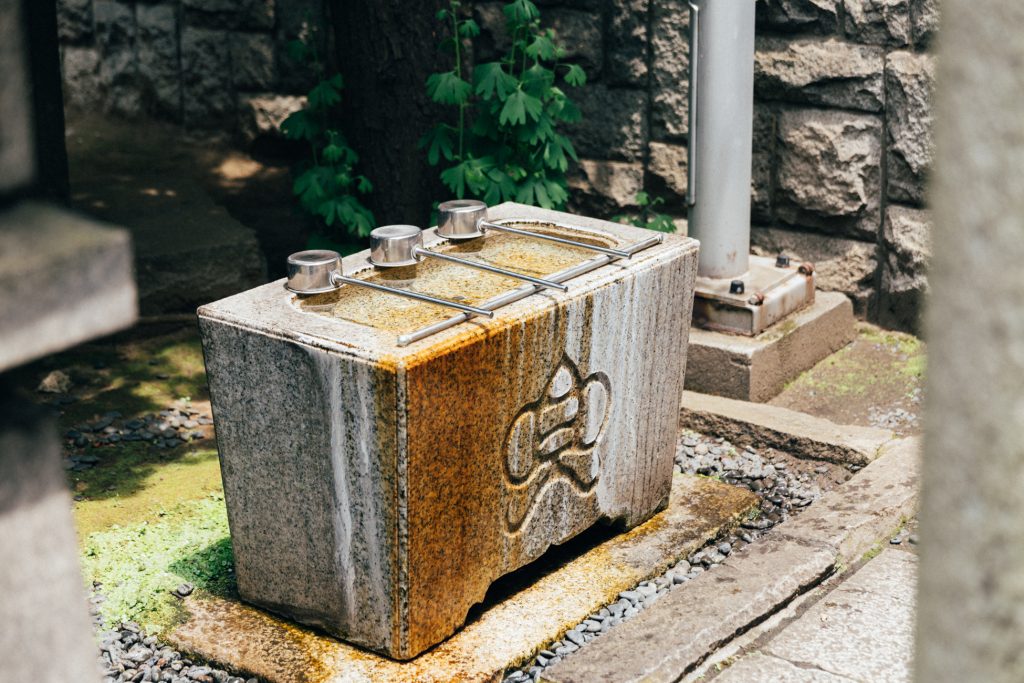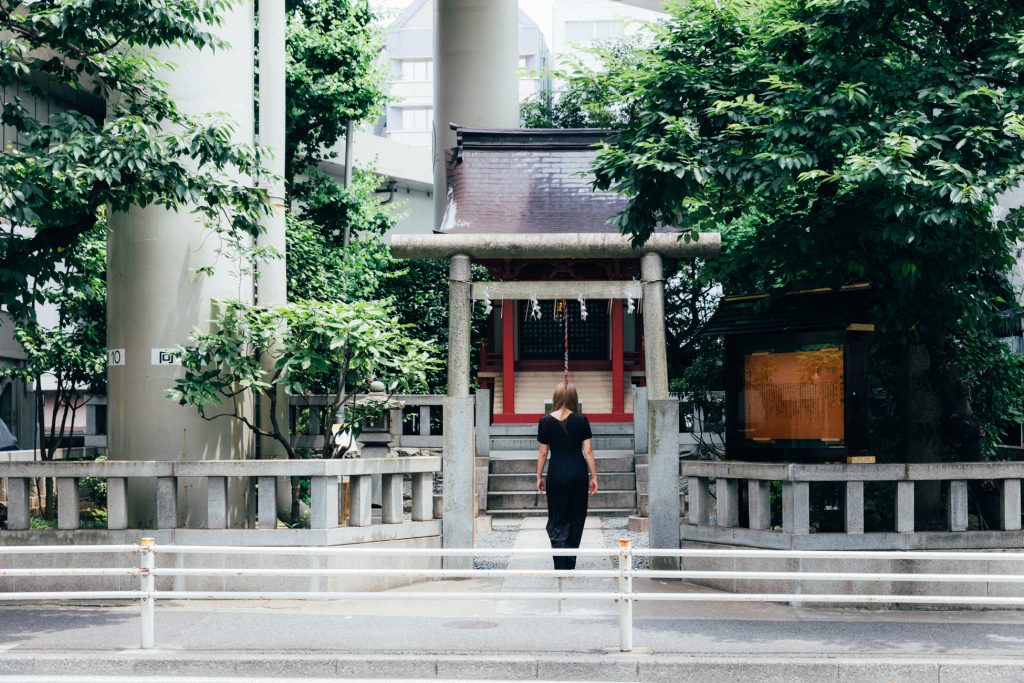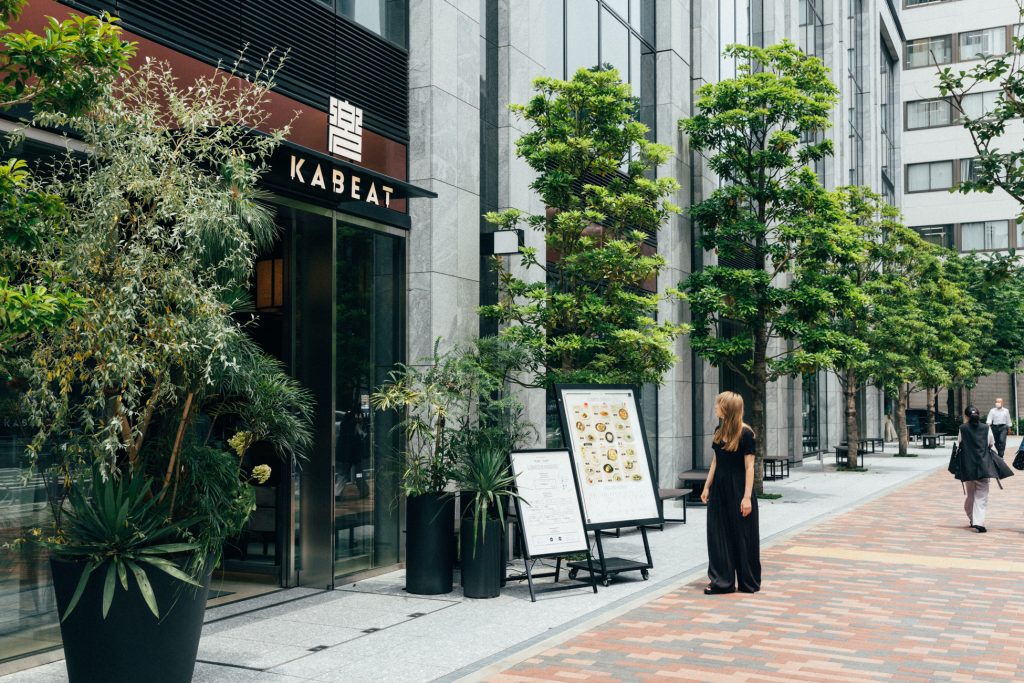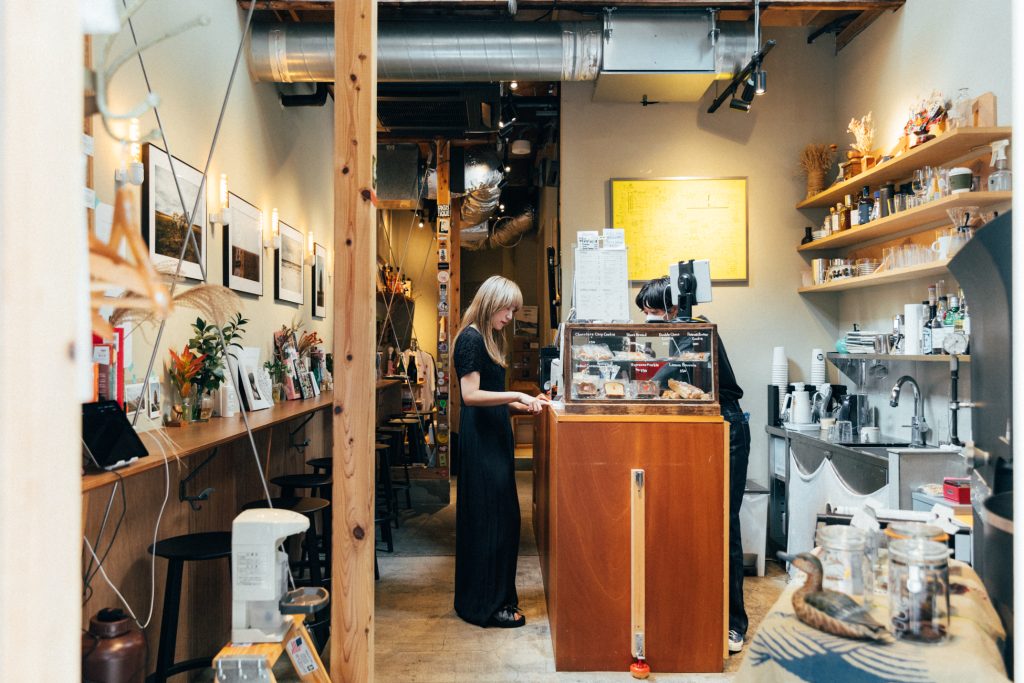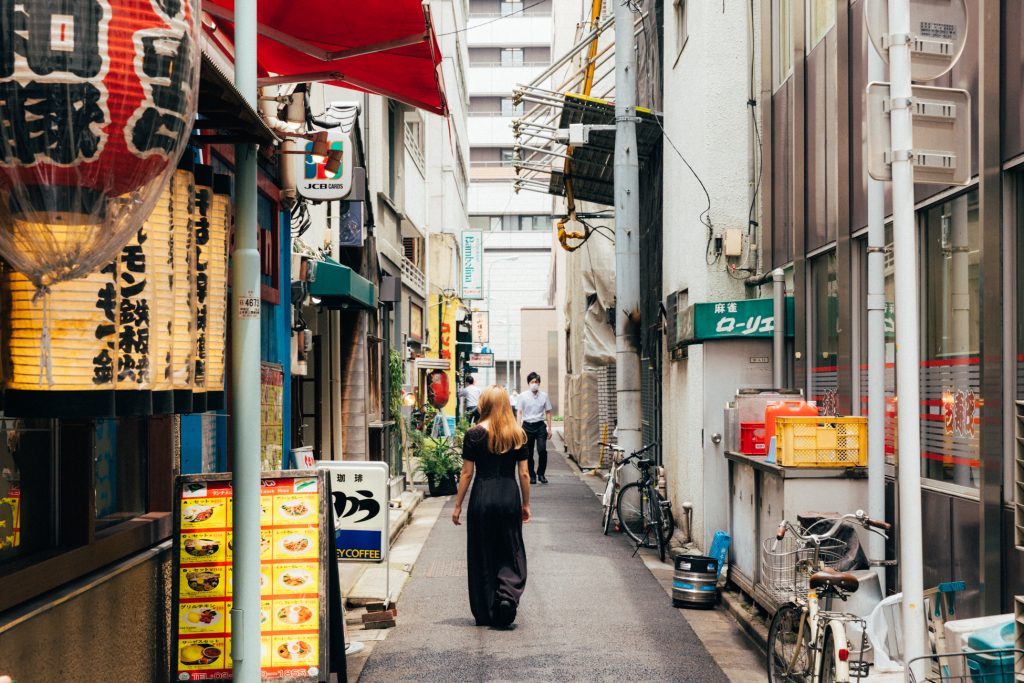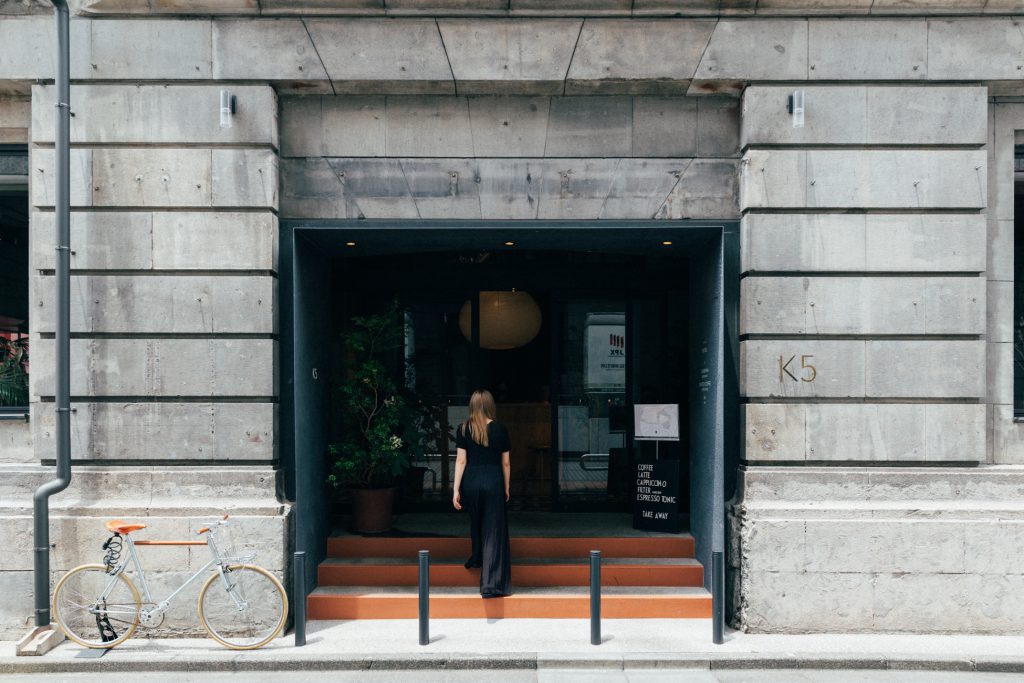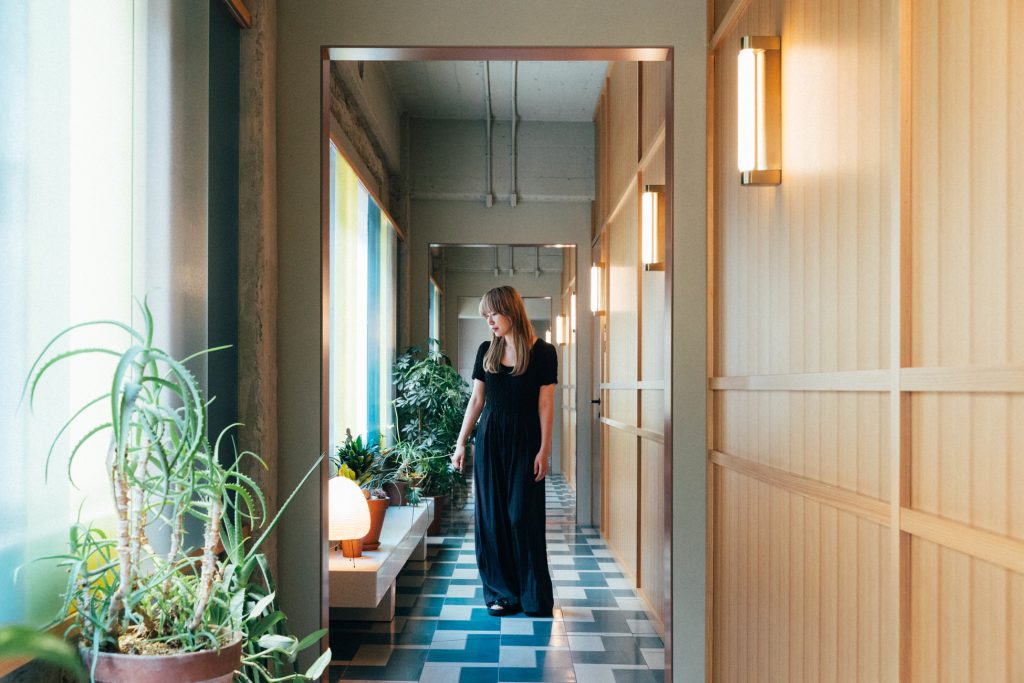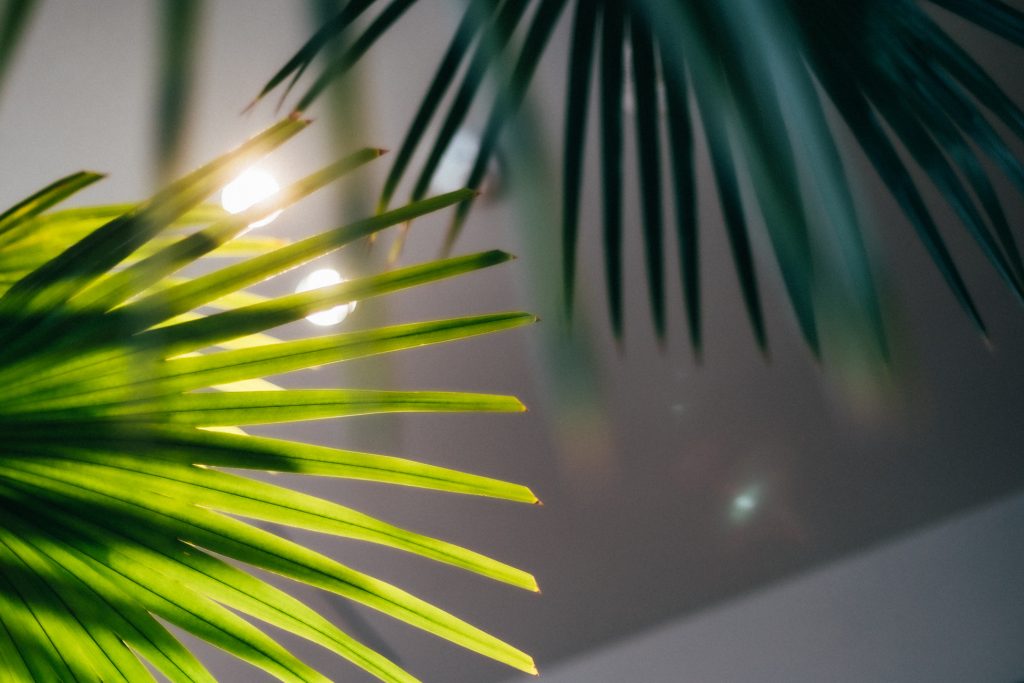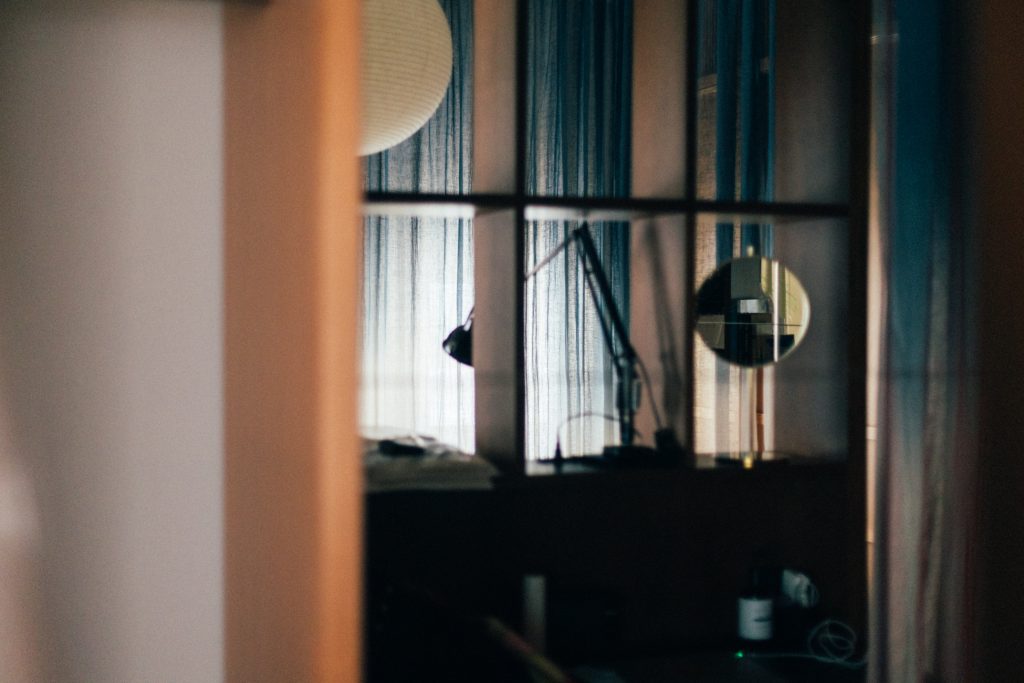


2022.07.29
Yukako Ishikawa
Urban Experience Designer Co-Chairman, for Cities General Incorporated Association
Exploring the stranger's perspective
New value and context for the city
●What themes or questions do you ask yourself when you visit or stay in a new town or city?
Mariko Sugita, who works with me on the project “for Cities,” and I have both lived abroad and moved around a lot, so we don’t really have a strong sense of a place that feels like a hometown. I’ve been an outsider ever since I can remember. So I feel that I’m still searching for a place where I can stay. On the other hand, I also feel that the freshest way to see a city is when you’re able to see it from the outside and gain a different perspective. We are working in Japan and abroad in a way that we enter a town with that theme in mind but come back with a “parting gift”.
●Is there any particular kind of town that you would like to research or sink your teeth into?
I went to Fukuoka the other day and everyone who went to Fukuoka said they didn’t want to come back! I wondered why that was… I want to go to places that have a positive reputation through good word-of-mouth and then go and experience it for myself.
●Are you more intrigued by stories from people around you than by information on the Internet or social networking sites?
Yes, I think so. When I visit an unfamiliar city, I often go to meet people. I use those local people as a key that helps me to access places most visitors aren’t able to access. I feel that through this, my connection to other people is expanding.
●How did you feel when you actually visited Fukuoka?
I felt that it was a good place to live. Of course, the Tenjin area is currently under construction for redevelopment, but it is close to the sea and mountains, and the food is delicious. What I thought was nice was that there was a BAPE (*1) store and a local set menu restaurant called ‘Ichizen-meshi Aokido’ adjacent to each other. I thought the scenery was really nice. It was in an area I named “the Harajuku of Fukuoka”! The coexistence of a global brand and a local restaurant felt very Asian to me!
※1 Retail store of the fashion brand “A BATHING APE” launched by NIGO in 1993.
●Do you think that your perspective as an outsider helps you appreciate things differently?
I think it’s possible to add value to things that are taken for granted by the people who live there. When I talk with people in the city, I wonder if what they perceive as negative can be seen as a positive to others, or if we as outsiders can add some value to it. I think it is the outsider’s perspective that can put a different context on top of the existing context.
●I believe that we can find value not only in the good things that are too obvious to notice but also in negative things as well.
On the other hand, there are many cases where something that the locals are proud to talk about is not attractive at all from a stranger’s point of view!
●I would like to hear about your background and how that helped shape your perspective.
What I think had a great influence on me was my experience in Düsseldorf, Germany, where I lived when I was in elementary and junior high school. In particular, a park called “Indian Platz” where I used to play every day as a child. It was a play park that I used to go to, and it was operated based on the concept of an “adventure playground”. This is an idea that is spreading around the world, especially in Europe, and the park I was playing in had a style that let children develop their own play style based on the theme of freedom and responsibility. When I think about it now, it was a rather barbaric park.
●Barbaric……?
We could use fire, and I used to love to build houses out of piles of scrap wood using a hammer and a saw when I was in elementary school. I learned social skills while exchanging tools with the children around me, and I even got hurt. It was the first opportunity for me to interact with things outside of the house, and I think that is when I started to like the idea of creating my own cityscape. I wasn’t told to play in a certain way; I created my own play, and since the park was seamlessly connected inside and outside, I found myself playing on the street. Stuff like that happened in my childhood.
●The concept is different from Japan, where playground equipment is fixed and kids just go to play with it.
Düsseldorf has some large buildings, but when I went to the city center, I felt that life in the city was peaceful and within reach. When I returned to Japan, I felt that it had suddenly become unreachable.
●When you say “unreachable”, are you referring to the feeling of having lots of rules and the pressure for everyone to follow them?
Yes, yes. It was systematic, or rather, there were many unspoken rules, and I felt like I had to follow them or else I would miss the flow of life. I felt like I couldn’t walk freely. I felt pressured to act a certain way in Japan. When I became a university student and then a working adult, I learned how to take alternative paths, and I think I have learned how to walk comfortably and how to look at the city.
●What were your days like in high school and college?
When I came back to Japan for high school, there were a few times when I felt a kind of initial discomfort. I went to a high school near Shibuya by taking a train, so I encountered crowded trains, and I was unconsciously stressed because I could not get used to the Japanese environment at first. However, I found the situation interesting, and I was able to look at it quite calmly and objectively.
I saw busy people working, I saw crowded trains every day, and I noticed that the level of happiness was different from what I had witnessed in Germany and that there were not many people smiling.
It was when I was in high school that I became interested in what was at the source of the phenomenon of human action and whether the structure and space of the city created it. I was in a high school that required a research essay every year, so I did research on the psychology of color and space, and on parks, and it was at that time that my interest in public space grew. My father and grandfather were architects, so I went to see buildings and read books about buildings, but I was more interested in the software and phenomena inside buildings. I was also a youth who liked to observe people and situations. I wanted to study something in the field of creating situations, so I went to Sophia University, hoping to study urban sociology there. At that time, I encountered Central East Tokyo (CET *2) and other examples, and I was attracted by the non-verbal aspects that could not be explained theoretically, and I thought they were interesting. I was also interested in art projects and urban development as a personal theme.
※2 A combined art, design, and architecture festival held annually from 2003 to 2010, utilizing vacant properties scattered around the Nihonbashi, Kanda, and Asakusabashi areas.
●Did you continue your work after graduation as an extension of your studies?
I was interested in things like placemaking, but I didn’t want to design. When I thought about how one can change the way people behave, I thought, “Ah, consciousness! That is why I was interested in creating a place for education, and I joined a company called Benesse Corporation to work in the educational division, not to study for entrance exams, but to nurture sensitivity. I was also involved in the art camps that were being held in Naoshima.
●What kind of work did you do there?
I was only at Benesse for two years, but I decided that I wanted to work hard on creating places, so I joined Loftwork, where I had interned as a university student. I was mainly working on projects that involved creating places.
I was designing workspaces for companies, and since I was mainly engaged in urban planning in Shibuya, I did social experiments using public spaces and attempted to develop bottom-up methods of intervention in urban planning. It was a great experience for me to see how my individual research and studies were connected to society through such work.
●I feel that the scale and timeframe for projects in Shibuya must be very wide?
When it comes to planning for Shibuya, I think many people have been thinking in the span of 10 to 20 years. I think that city plans tend to be long-winded, or rather, they tend to be based on a big picture. So, while listening to various visions and ideas we thought “why don’t we just give it a try?”. We started with a plan that could be completed in about three months. We would first propose the use of rooftops and streets, saying, “We want to take action first and use the city. I was also involved in a project to create street furniture called “Street Furniture Hack!!!” that would block off Dogenzaka and turn the street into a place for people, as well as researching underutilized real estate in Shibuya to see how the rooftops of multi-tenant buildings could be converted into places for artists and people of expression.
●What do you think is needed to get people more involved and interested in these types of projects in the city?
This is exactly what I found difficult. We also tested how people would use the street for social experimentation, but people are wary of anything out of the ordinary, so we had to bridge the gap and design the space well or it would just end up being an event. We found that high school girls and foreigners were able to make good use of the space, but most people would just pass by.
I began to gain interest in landscape design, and I realized that unless we look at the situation of the land and the environment from a more holistic perspective, we will be limited to designing places based on functionality, ergonomic behavior, and economic indicators alone. I began to feel that I wasn’t getting anywhere and that I wasn’t on track. I feel that we need to think about designing for things other than humans. For instance, there are many planted trees in the neighborhood that allow people to relax and insects to live. We need to foster greenery, be more wary of sunlight, shade, and ventilation, and allow for spaces in-between buildings. So, recently I have been interested in greening and greenery, or how to create a town from non-human perspectives, and I am consciously trying to get involved in such projects.
●I understand that you and Mariko Sugita, who now co-manages ‘for Cities’, worked together at Loftwork.
She was the first member of a new division that was going to create a team capable of creating places in earnest at Loftwork. At the time she was in the production department and I was in the director’s department, and we had never worked together properly. However, we had similar interests, so we planned and implemented projects together, and we often went out together for events in areas that other members of the team weren’t interested in.
In thinking about how to interact with the city and what we could leave behind, we came up with the concept of "Okimiyage," (A parting gift).
●What’s the story behind the two of you starting up ‘for Cities’?
We were both working independently as freelancers, and we kept in touch with each other from time to time. When we were talking about what we wanted to do, there was an organization called ZK/U, which runs a studio program for urbanists in Berlin, and we were wondering if we could apply to their program together. I applied and was accepted, and we agreed to do a six-month residency and research. We exchanged information about the project, such as how interesting it was and what we had seen, and we thought it would be interesting to make it public. So we started a podcast called Good News for Cities, where we talk about cities and their development.
●This was around 2020?
I couldn’t travel to Germany because of the Corona disaster, but I had six months open in my schedule, so I decided to go to the Netherlands, which I was able to enter at that time. In Amsterdam, there was an urbanist couple named ‘Cascoland’ whom I had visited earlier, and when I contacted them, they were just starting a new project, so I told them I wanted to work with them.
●When you were in the Netherlands, you produced a zine titled “The City as a Stranger” (*3), and have been giving shape to the output of your activities during your stay there.
※3 This booklet is a partial record of activities and observations made by Ishikawa and Sugita during their stay in Amsterdam from September to November 2020. It was designed by an illustrator and designer they met there.
In thinking about how to interact with the city and what we could leave behind, we came up with the concept of “Okimiyage,” (A parting gift). We decided to create a zine and an online map of the collective with local project members.
●Are there cities that you would like to be involved in on an ongoing basis?
I would like to be involved in the Netherlands on an ongoing basis, including the exchange of information. I would also like to invite people to Japan, although I am not sure how much of a hurdle it will be for them to fly here in the future. However, since the launch of ‘for Cities’, we had talked about wanting to do research in Asia. I would like to visit China, Vietnam, and Korea next year.
●I’ve been to Kabutocho several times, and today you walked with me for about 30 minutes before the interview.
To be honest, I feel like I am in a city where I haven’t found my connection yet. It may be that I am far away from the world of finance.
I felt that if we could change the way the street was designed in a more friendly way, the main street would change, and the way people walk would change even more.
●How did you become familiar with the city, or what triggered your contact with the city?
I thought it would be good to become acquainted with people at places like SR, the coffee shop we stopped at today, and to be able to see their faces a little more. I also felt that I should probably spend more time walking around. There are many buildings in this area, so I felt that walking only on the flat surfaces (streets) was not enough. Therefore, I felt that if I explored the inside of the buildings and made vertical movements, my perception would improve and I would be able to get closer to the city.
●Today, you were only able to walk around the ground floor of the city.
I also felt that the streets could be designed a little more, like the K5 area, which has become a bit like a backstreet. I felt that the streets that used to be back streets are now becoming front streets. At that time, I felt that if we could change the way the street was designed in a more friendly way, the main street would change, and the way people walk would change even more.
●Nowadays, when we go somewhere, we often look at a map on our smartphones and travel along a route that connects the dots, but it might be more interesting if there is something to discover on the road in between.
I thought the narrow path next to the Kabuto Shrine would be an interesting path to take. I think it would be quite moving to go down that road and see the river open up in front of you. It would be interesting if we could create a good atmosphere for a place that is not the main road.
●Last year, during the ‘for Cities’ Week (*4) in Nishi-Ikebukuro, Tokyo, there were various devices set up on the streets around the venue, like a play park.
※4 A festival where people can learn and experience practices for thinking about the cities of the future. 2021 was held in Tokyo and Kyoto. This year in July, it was held in Cairo, Egypt with local partners.
Various urbanists participated in the handmade work, such as setting up a punching ball to jump and hit, putting tape on the wall for play, and so on! The owner of the venue liked it, and I am happy to say that some of the designs are still on the street and have become part of the everyday scenery.
Kabutocho has greenery and the feeling of being human-sized in scale. A new store built in a new building surrounded by natural wood.
●I’m sure there are still some areas that we don’t have the full picture of, but have you seen any glimpses of the uniqueness or potential of Kabutocho?
After walking the Yorihashi (bridge) area, I thought I would like to think more about the access to the river, the use of the river, and the relationship between this kind of financial district and the river. It is interesting to see how the scenery changes once you cross the river, and how the river is a place to pause. I thought that there is a lot of potential to make good use of the small corner lot where the riverfront and the street intersect at 90 degrees. It is on the edge, but it also has a centripetal force. I think it could be a place where there is room for citizens to get involved. There is a smoking spot by the river, but it would be nice if it were not only a place for smokers but also a place to take a short break. I felt the potential of the river, in creating more such places in the city.
●The river near Kabutocho has historically been a busy place for people and goods, as it was a landing place for goods in the Edo and Meiji periods.
I also thought that the scenery was greener than I expected. Even in the financial district in New York (Wall Street), there is an overwhelming sense of buildings. In that sense, Kabutocho has greenery and the feeling of being human-sized in scale. I also noticed a new store (Heiwa Doburoku Kabutocho Brewery) built in a new building surrounded by natural wood.
Also, each building in Kabutocho has a long history, and I think it creates a unique landscape. It would be impossible to create a new building from scratch now, even if we wanted to. I felt that this kind of landscape is a place that is worth cooking in some way.
● If you were to hold a workshop or event in Kabutocho, what would you like to do?
I had an idea that it would be interesting to open to the public, places that are not usually accessible. Places such as banks and stock exchanges, and offer special access to these places. I would like to see the insides of buildings a little more.
Do you know the Open House (*5) event that has been held in London for many years? This is also a part of architectural education, where the city is opened to the public and children can experience places that are normally inaccessible or accessible only to adults.
※5 Held in London every September. Many famous buildings that are not usually accessible to the public are opened to the public free of charge, and guided tours are also offered.
I think it is important to change the way we have been acting and relating to each other.
●Sounds like a project that could be unique to the financial district.
Also, since most men wear suits, it would be interesting to have a pajama day or a yukata day, or a day when the whole town changes its attire!
●Last year’s ‘for Cities’ Week had the theme of “creating city life with our own hands.” How do you think visitors to Kabutocho and the people who work and live there can get involved and make more use of the city, and how can they find room to make their own way in the city?
I think it is important to change the way we have been acting and relating to each other. For example, I think it would be interesting to open up the process when building or renovating a new building. There are examples of this in Germany, where people are asked to stay temporarily and decide on the function of the building. One of the interesting things we did in Shimokitazawa was to create a park with grass and trees. In the planning stage, we let children play in the park and then designed the actual paths along which they played.
It would also be nice to have various people involved in the maintenance part of the building after it is built. For example, I wonder if that lobby at Kabuto One could be more open to the outside world. Perhaps it is more about rereading and using existing places and functions rather than adding something new.
●Lastly, please tell us about what you would like to do in the future as a function of ‘for Cities’.
This year, I was given the opportunity to do projects while staying in various places. In July, I will be staying in Cairo, Egypt, to exhibit my work with a local research center. After returning to Japan, I will stay in Nagata Ward, Kobe City, from September to October to launch a project for that town.
Personally, I am quite interested in themes such as safety nets in the city, and I am interested in how we can create a form of support that is different from the past. I’m interested in how we can create a form of support that does not rely on money. I would like to think about whether that support should be in the form of communities, institutions, or spaces.
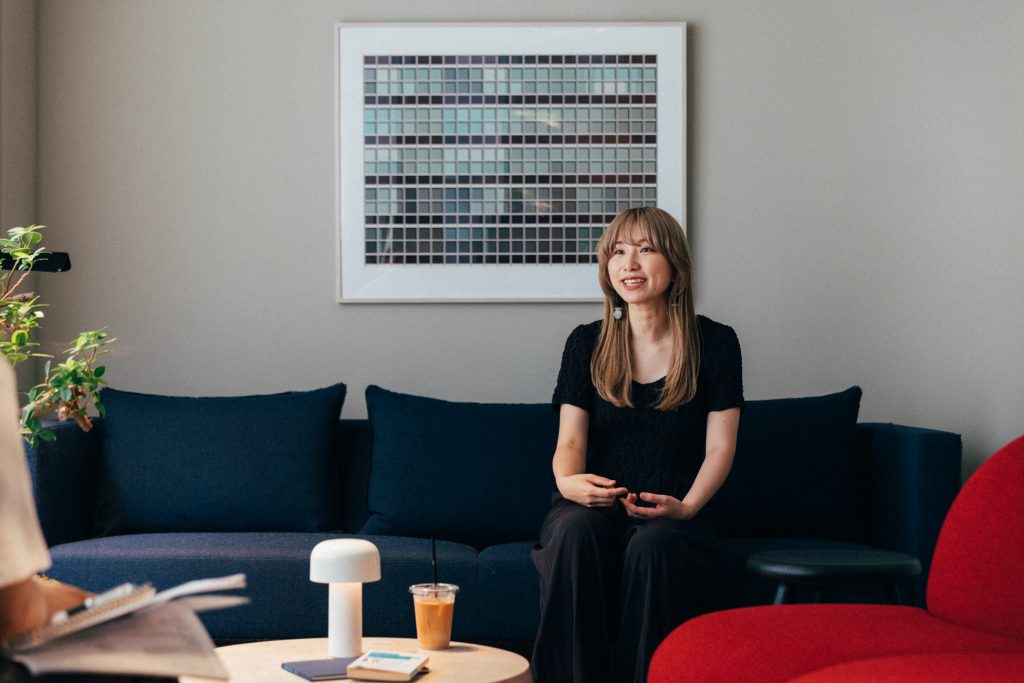
Yukako Ishikawa
Urban Experience Designer / Co-Chairman of ‘for Cities’ General Incorporated Association
With the motto of “using the city with our own hands,” she has been involved in citizen-participatory urban intervention activities with people from various life backgrounds. (After working for Benesse Corporation and Loftwork Corporation, she became independent and established the general incorporated association ‘for Cities’ with Mariko Sugita. With the theme of “editing urban experiences,” she has been involved in place design projects in several cities, including Shibuya, Ikebukuro, and Amsterdam. Recently, with the theme of creating places for learning, she has been working with the Nippon Foundation on the “True Colors Academy,” a place for learning to “shift one’s perspective,” the “Urbanist School,” a place for learning for urbanists, and “City Exploration,” a workshop for children to explore cities. Her favorite moment in a city is “the way home”.
Text : Takeshi Okuno
Photo : Naoto Date
Interview : Takeshi Okuno
